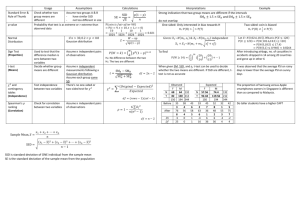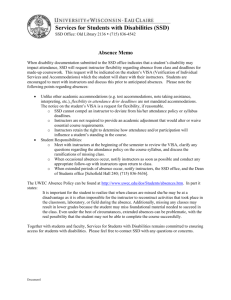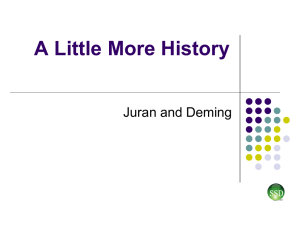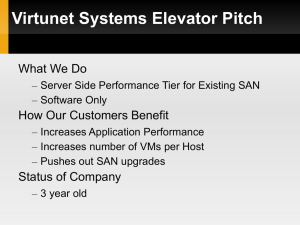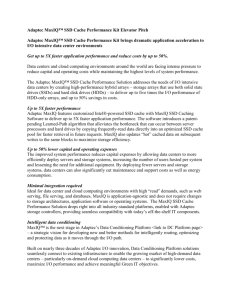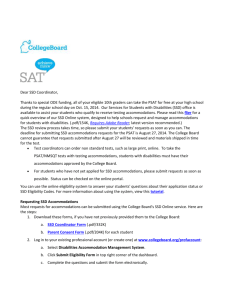2 Description of Solid State Drive Identify Proposal
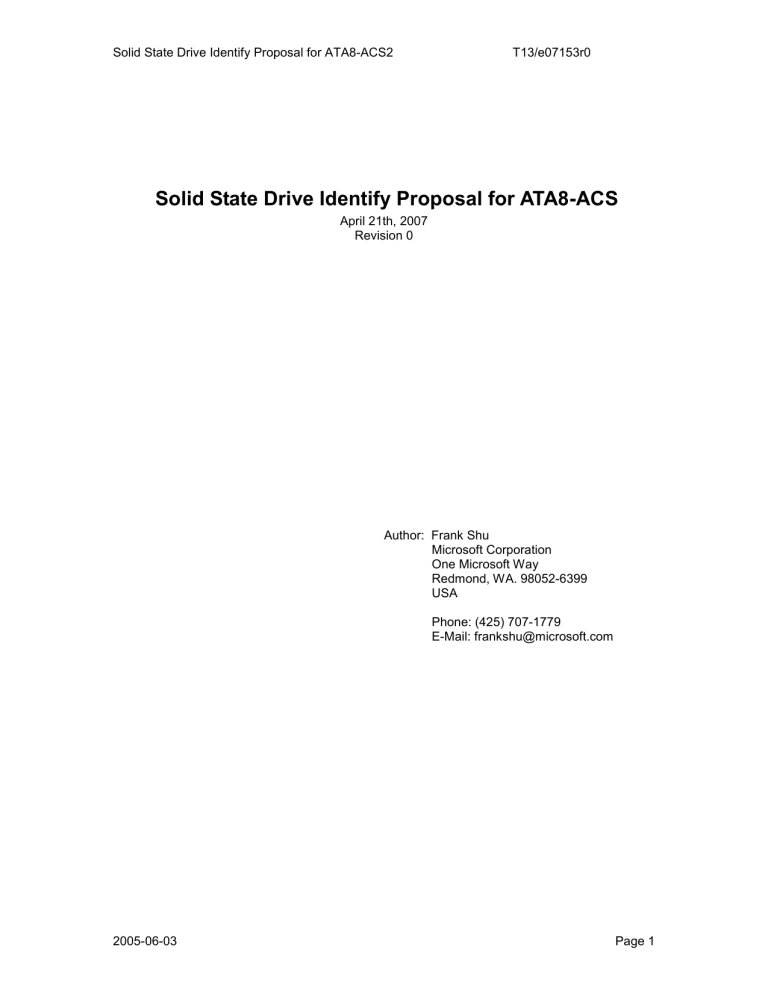
Solid State Drive Identify Proposal for ATA8-ACS2 T13/e07153r0
Solid State Drive Identify Proposal for ATA8-ACS
April 21th, 2007
Revision 0
Author: Frank Shu
Microsoft Corporation
One Microsoft Way
Redmond, WA. 98052-6399
USA
Phone: (425) 707-1779
E-Mail: frankshu@microsoft.com
2005-06-03 Page 1
Solid State Drive Identify Proposal for ATA8-ACS2 T13/e07153r0
Table of Contents
2 DESCRIPTION OF SOLID STATE DRIVE IDENTIFY PROPOSAL ...................................... 3
3 THE PROPOSED SOLID STATE DRIVE IDENTIFY DATA ................................................... 4
Revision History
Date
2007-04-21 0
Revision
Initial Draft
Description
2005-06-03 Page 2
Solid State Drive Identify Proposal for ATA8-ACS2 T13/e07153r0
1 Introduction
In the recent time, the increase of shipping Solid State Drive(SSD) as PC’s primary storage, especially on laptop machine, has became a big trend. The driven force of this movement is both advanced flash memory technology and continues of flash memory price dip. While SSD as the
PC’s primary storage can provide benefits of performance and relibility, the nature of SSD technology also introduces some concerns which require special care and optimization from host computer.
In the market today, all ATA interface SSD devices present themselves as HDD(Hard Disk Drive) device on ATA bus. As a result, the host computer is unable to identify SSD device, and therefore treads SSD just like HDD. In order to understand the consequence of this implementation, a serious of study has been conducted, the result of this study shows that such implementation does cause negative impact on SSD device ’s performance, relibility and diagnosis ability.
In order to enhance the current SSD implementation, and strong the support of SSD device, it is believed that this proposal is a necessary and important first step. While the related details of
SSD support technique and optimization on performance, relibility and diagnosis ability are addressed in separated proposals to this committee, this proposal will only focus on the method of identifying of SSD device on ATA bus.
2 Description of Solid State Drive Identify Proposal
SSD device made by flash memory has showed certain advantage on performance, relibility and power saving as storage device. At the same time, host computer not only can take such advantages for better system performance, but also can further enhance them by creating new space for SSD technology to grow. To identify storage device explicitly as SSD device from other type of device, like HDD, makes it all possible.
Identifying of SSD device to host computer is done through the existing ATA Identify command with a new defined set of SSD identifying data that best represents SSD characteristic. The host computer should obtain thus data as soon as possible after it is up and running, so it can apply necessary optimization thereafter. The optimizations described below are just some of examples which the host computer can do. The details of each optimization will be described in separated proposal, or other technical document which is available through other resources.
Be able to identify SSD device, one of the optimization which host computer can apply is a new data defragmentation in SSD. The current defragmentation technique is designed with the goal of minimizing random access time of storage device; a host computer “Defrager” relocates all data of a file into the physical closest possible locations in storage medium. Since SSD device does not involve seek operation, it has a fast random access time regardless of physical location of the data, the current defragmentation appears un-necessary to SSD device. Instead, the large amount of writes generated by “Defrager” during relocation of data will impose both performance and relibility(erase cycles) setbacks to SSD device. Should correctly identify SSD device to host computer, “Defrager” can be simply turned off.
Another optimization is diagnosis represented by SMART in storage device. The current SMART design is heavily reflected on HDD device. The data structures for seek error and start/stop count, for example, are irrelevant and undefined for SSD device. When host computer checks for such data, an unnecessary failure can occur. Such failure, otherwise, can be prevented by correctly identifying of SSD device.
During the identify SSD device, other important SSD properties also can be discovered by host computer for further optimization and support of new SSD technology, for example, alignment and composite SSD.
2005-06-03 Page 3
Solid State Drive Identify Proposal for ATA8-ACS2 T13/e07153r0
3 The proposed Solid State Drive Identify Data
In this section, the details of proposed ATA identify data is showed as bellow.
ATA SSD IDENTIFY DEVICE WORD
Word O/M F/V Bit
Field
Description
xxx+3
xxx+4
xxx+5
xxx+6 xxx
xxx+1
xxx+2 xxx+6+32
F
F
F
F
F
V
F
F
V
O
O
O
O
O
O
O
5-15 Reserved
4 1 = Composite SSD
1-3 Reserved
0 1 = SSD device
0-15 SSD Level-1 Storage Size in MB(LSW)
0-15 SSD Level-1 Storage Size in MB(MSW)
0-15 SSD Page Size in Byte(LSW)
0-15 SSD Page Size in Byte(MSW)
0-15 SSD Block Size in Byte(LSW)
0-15 SSD Block Size in Byte(MSW)
Reserved
If bit 0 of word xxx is set to 1, the device is a SSD device.
If bit 4 of word xxx is set to 1, the SSD device is a composite SSD, i.e. its storage is made by two different classes of flash memory; Level-1 storage(faster and more reliable) and Level-2 storage(Less fast and reliable ).
Words xxx+1 and xxx+2 specify the maximum size of Level-1 storage media in unit of MB.
Word xxx+3 and xxx+4 specify SSD device page size in unit of Byte.
Word xxx+5 and xxx+6 specify SSD block size in Byte.
Word xxx+7 to xxx+6+32 are reserved for future use.
(end)
2005-06-03 Page 4
